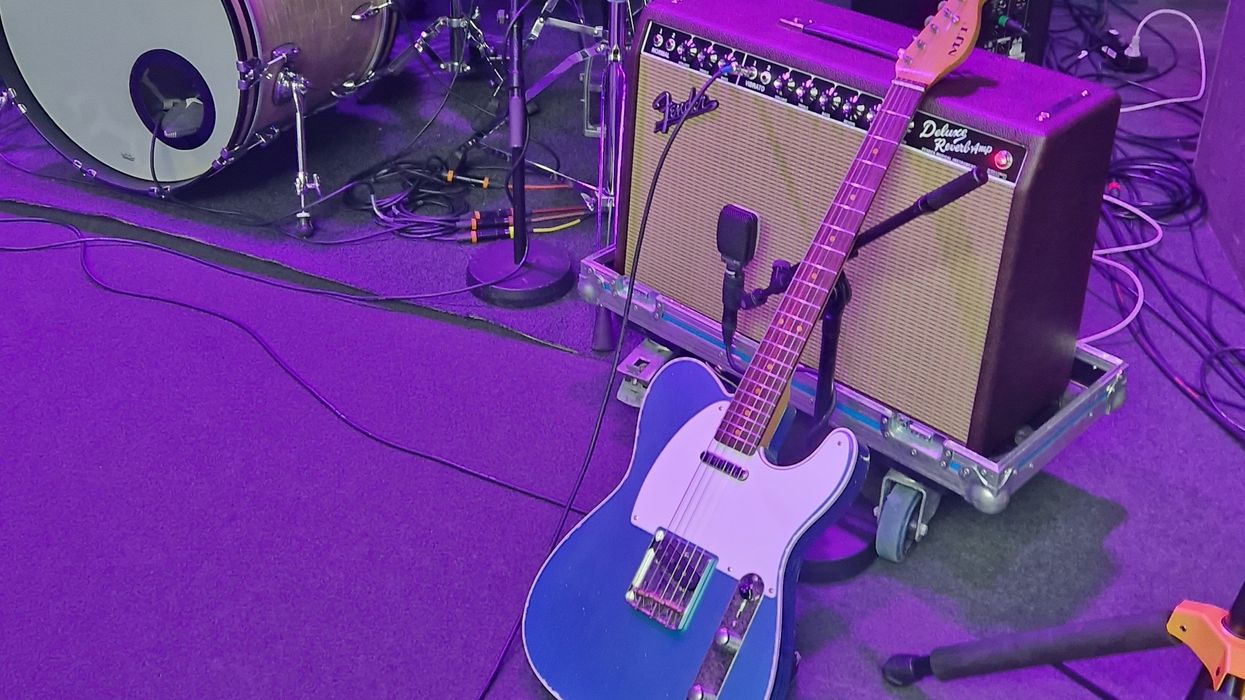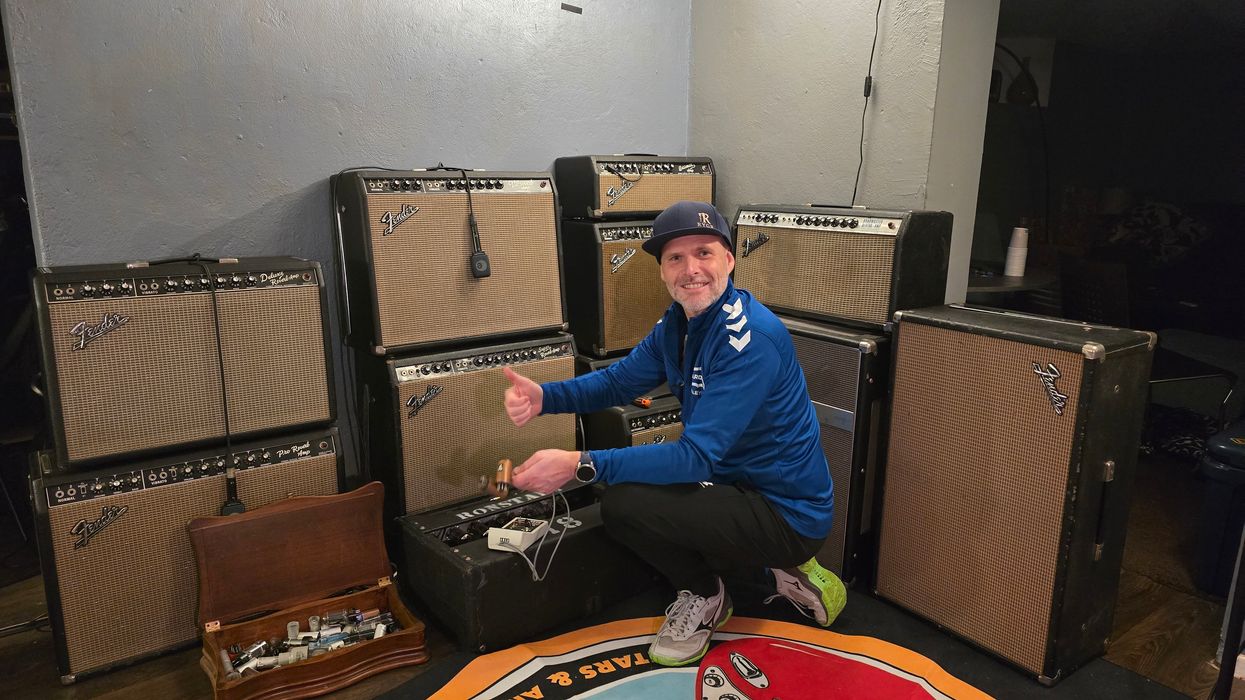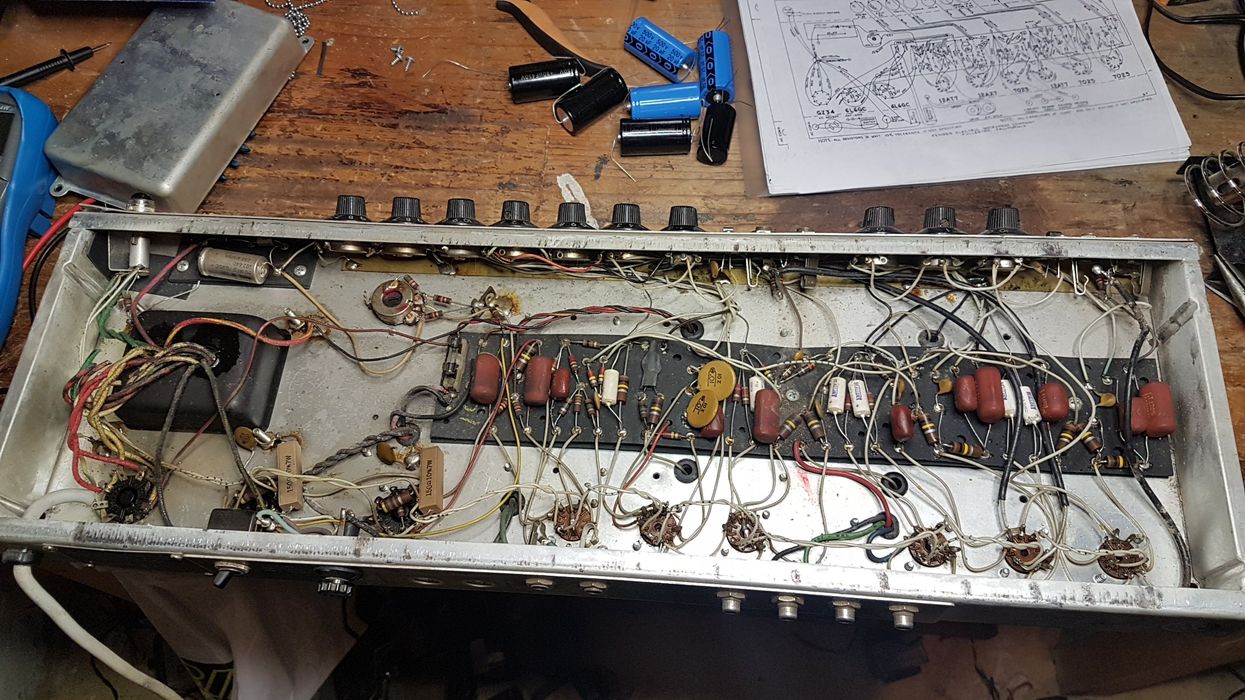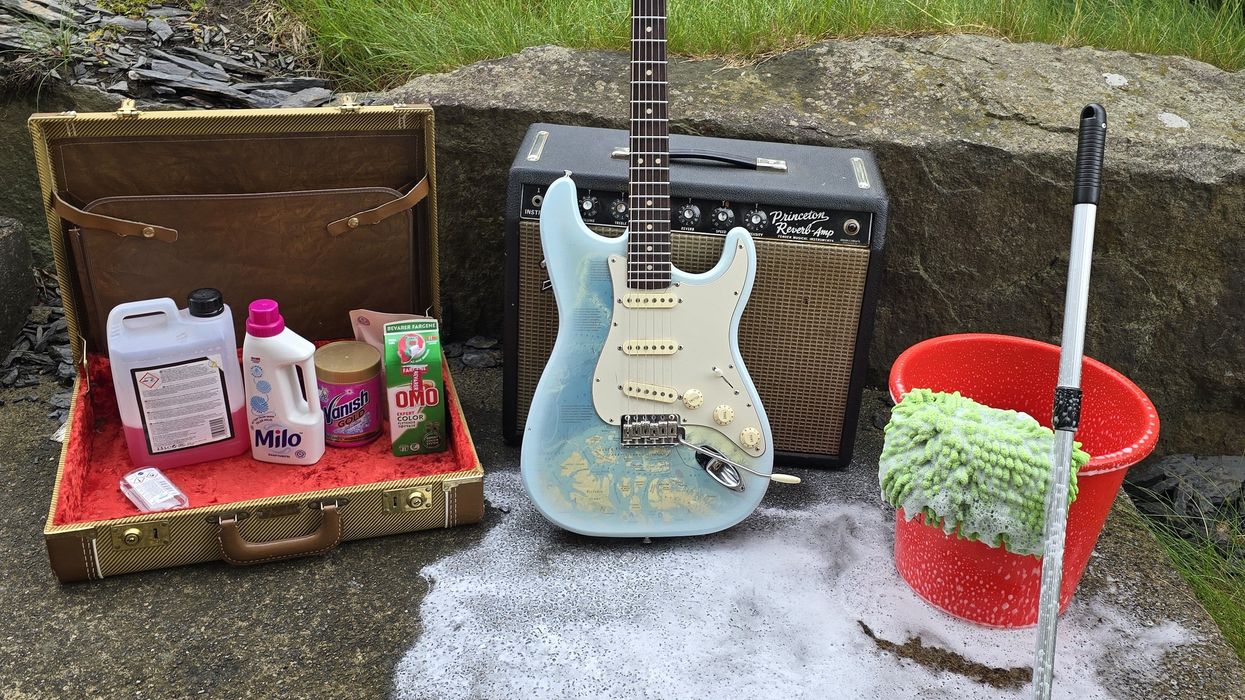As a guitar player, I consider guitar amps to be tools. The more varied work I do, the more tools I need. There are some amps that excel in one or two things but often disappoint outside their playing field. These amps require experience to dial in good tones and to pair with guitars and other gear.
This month’s amp is an underdog—a jack-of-all-trades but master of none. It is a tool you can bring with you to any type of practice or gig, small or large, and it will deliver. It truly lives up to its name: the Pro Reverb. So, let me explain why I love this amp … but also what annoys me about it, and what I do to get around that.
In 1963, Fender offered a single-speaker Pro amp with front-mounted controls. Various Pros with top-based controls had been in Fender’s line since 1946. In ’65, the Pro was replaced by the Pro Reverb, loaded with 6L6GC power tubes in a classic Fender push/pull class-AB configuration. The Pro had either a single 15"CTS ceramic speaker or a Jensen C15N. The Pro Reverb came as a 2x12, with either Jensen C12Ns, Oxford 12L6, or Oxford 12T6 speakers—the latter a very underestimated speaker and comparable to the more famous C12N. In 1967, a silver-panel model followed and was available through 1969. Several other speakers, including models by Utah and Rola, came throughout the ’70s. And around 1978, a 70W version of the Pro emerged, with master volume and a push/pull boost, for a roughly five-year run.
The differences between the single- and dual-speaker black-panel Pros were most importantly the speaker configuration and the addition of reverb in the vibrato channel. There were two different versions of the output transformer: the 8-ohm 125A7A and 4-ohm 125A6A. This smaller output transformer is found in several medium-sized amps, such as the Vibrolux Reverb, Bandmaster, Tremolux, and also the rare and coveted 1964 Vibroverb.
How does it sound to play through a Pro Reverb, with its combination of the classic black-panel AB763 tone stack, dual 6L6GCs, a large and bass-y 2x12 cabinet with a 5U4GB rectifier tube and a small output transformer? Beautiful, full, clean tone at lower volumes and wildly cranked tones when pushed—much more than you’d expect from such a big Fender amp. Very few amps can do both of these sonic profiles.
Please find a Pro Reverb and plug in your Telecaster for a real Keith Richards experience, with one of the best rhythm tones there is.
The large open-back cabinet means you can point the Pro in almost any direction and fill the room or stage. At home, I sometimes want the most natural break-up from the amp at lower volumes, so I simply disengage one of the speakers and insert a 12AX7 in the phase inverter slot. I think the Pro Reverb delivers the most elegant and balanced cranked tones of all black-panel amps. I also love that the amp offers a bright switch that will support pedals and guitars well.
One annoying thing about the Pro is the lack of a mid pot. Since it is that good at delivering cranked tones, I would like more mids for heavier distortion at lower volumes without having to disengage speakers or swap tubes. A mid dial would also improve EQ control, for playing clean. Without a mid knob, I often have to dial the bass knob all the way down due to the bass-y cabinet and flabby output transformer. The solution is, as always, installing a switch on the back of the amp that toggles between the stock 6.8k mid resistor and a 25k. The Pro Reverb is the amp that benefits the most from this mod, I think.
Finally, do we really need a Pro Reverb in our toolbox? The Deluxe Reverb and Vibrolux Reverb are also low/medium wattage amps. Both are lighter, more snappy, more practical at home or in the studio, and don’t carry two large 12" speakers, which are overkill for the Pro’s light output transformer. The Super Reverb also breaks up—and with more punch, bass, treble, and attack overall. It is also more touch sensitive. The clean-voiced monster Twin Reverb is 17 1/2 to 22 pounds heavier but does not require more space than the Pro Reverb.
Given all the superior amps mentioned above, the answer to my question is still “yes.” Our underdog can almost do all of what these legendary Fender amps excel at. But none of them will sound as warm as the Pro Reverb when cranked.
Please find a Pro Reverb and plug in your Telecaster for a real Keith Richards experience, with one of the best rhythm tones there is. Also, try a Les Paul or SG in the bridge pickup position and you might consider selling all your overdrive pedals. A semi-hollow ES-style guitar with P-90s in neck and the amp dialed-in clean will urge you to learn jazz! Please, don’t just take my word for it. Go experiment.


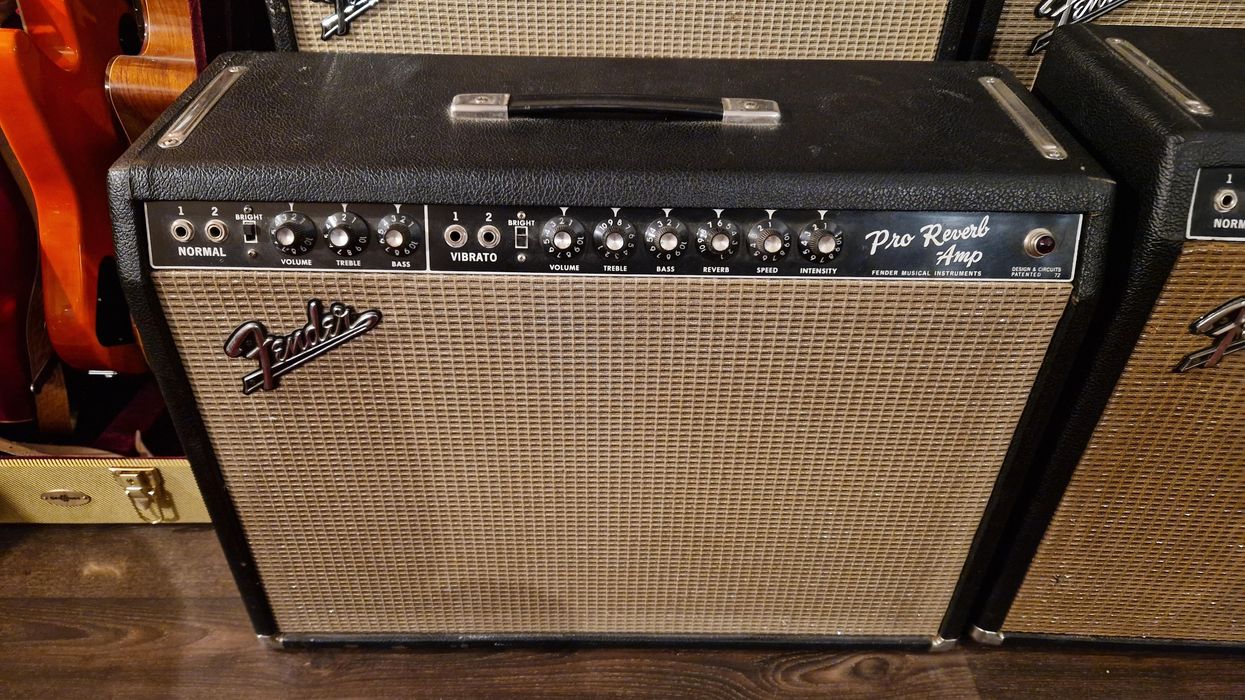



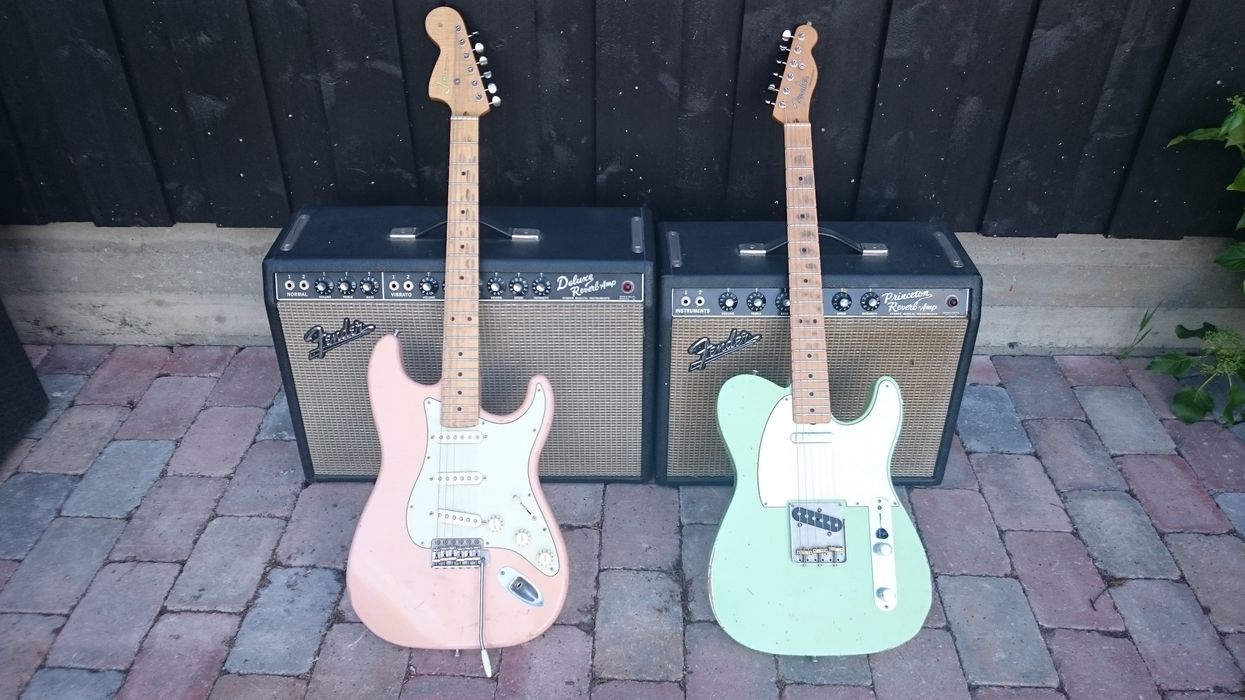
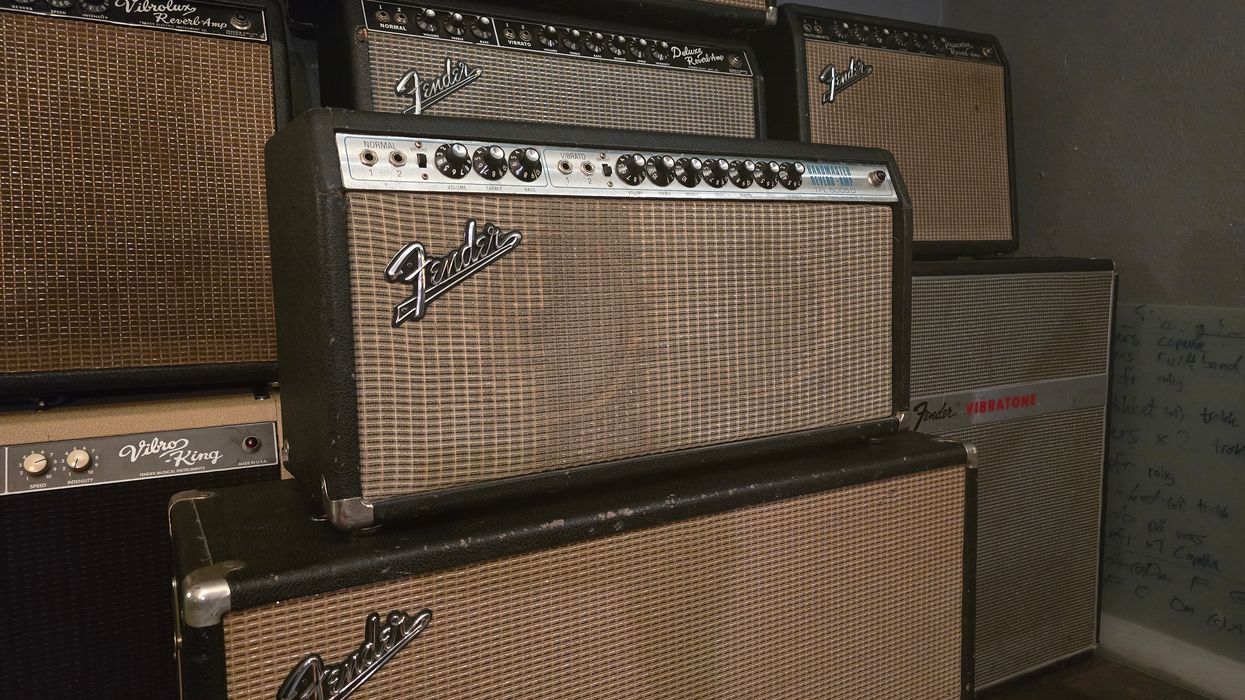
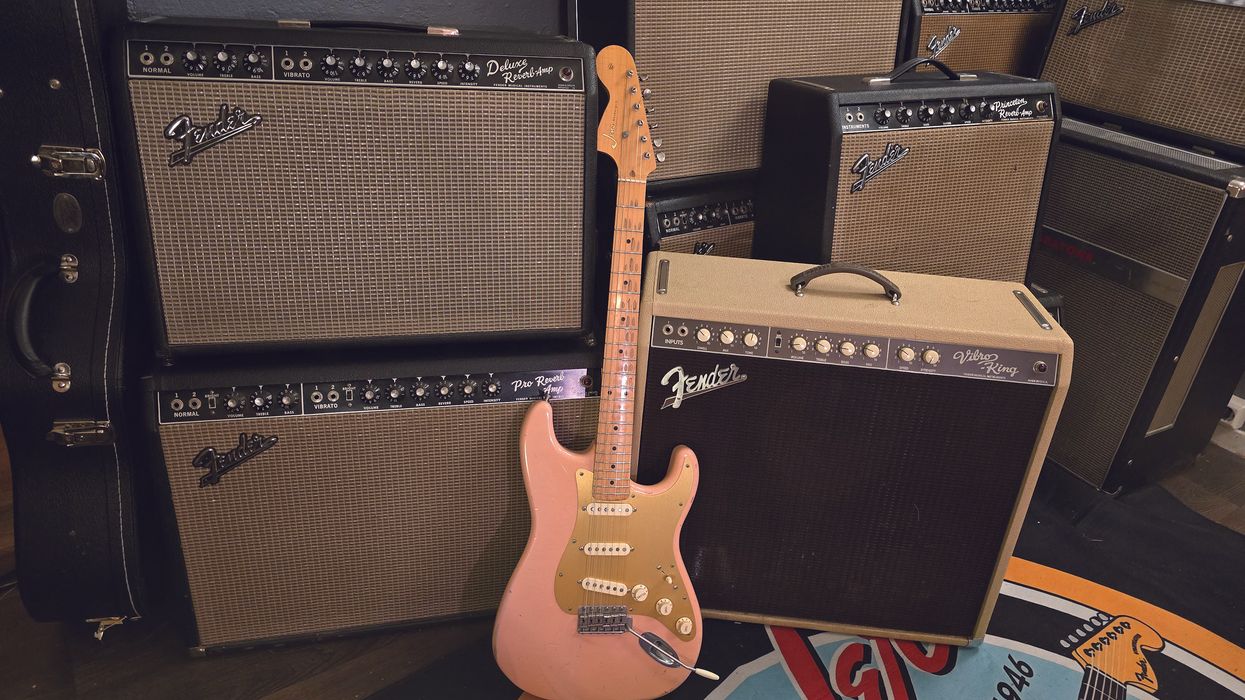



![Rig Rundown: Russian Circles’ Mike Sullivan [2025]](https://www.premierguitar.com/media-library/youtube.jpg?id=62303631&width=1245&height=700&quality=70&coordinates=0%2C0%2C0%2C0)


